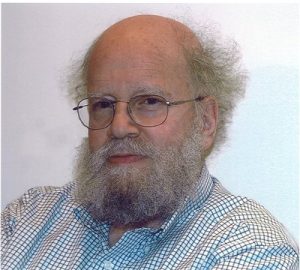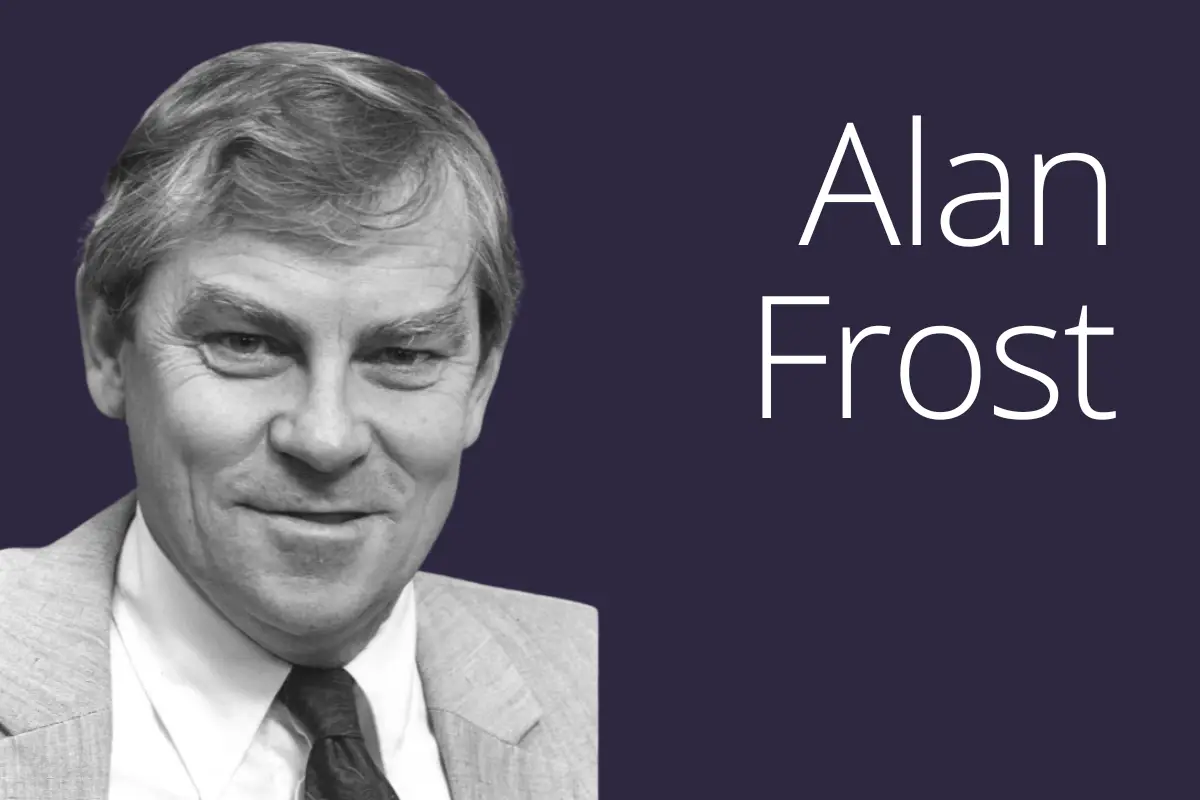
Michael Stocker was one of the most significant contributors to discussions of ethics, moral psychology and the emotions in the latter part of last century and the early part of this century. His legacy is to be found in scores of articles, among which are numbered some modern classics, and two highly praised books. After completing a PhD on supererogation at Harvard, where his doctoral work was supervised by Roderick Firth and John Rawls, he was appointed to positions at Chicago and Cornell before, to the good fortune of the discipline of philosophy in Australia, he accepted positions first at Macquarie, then at Sydney and subsequently at La Trobe. He was elected to a Fellowship of the Australian Academy of the Humanities in 1986. In 1989 he returned to the United States after being offered the Irwin and Marjorie Guttag Chair of Moral and Political Philosophy at Syracuse, which he held until his retirement. He was then appointed as a Professor Emeritus at Syracuse.
Although Michael was thoroughly conversant with contemporary work in his fields of interest he was also exceptionally well-informed about the history of ethics, not only of works by key philosophers such as Plato, Aristotle, Aquinas, Kant, Bentham, Mill and Sidgwick, but also those by significant but less lionised philosophers like G. E. Moore and W. D. Ross, along with related work in Continental European philosophy and psychoanalysis. While he was critical of the way that insufficiently detailed counter-examples have often been deployed in philosophical argumentation (see e.g., his 1987 article ‘Some Problems With Counter-Examples in Ethics’), and, in consequence, urged caution about employing counter-examples to try to settle debates, he made telling use of his wide knowledge of these varied sources to provide illuminating illustrations that challenged both received interpretations of those sources and conventional philosophical positions based on them.
Nowhere is this better seen than in his classic 1976 article ‘The Schizophrenia of Modern Ethical Theories’, which has been cited in well over a thousand professional publications (albeit it is similarly evident in many other articles, to say nothing of his two books, which will be further referenced below). In this article Michael argued that leading a life in accordance with a utilitarian or Kantian ethical theory is not compatible with having friendships. In a much-discussed example, Michael suggested that we would find it alienating for someone we regarded as a friend to visit us in hospital out of utilitarian or Kantian motives. Visiting someone from a desire to maximise utility or from a motive of duty cannot be an act of friendship, for friendship conceptually requires that an agent acts out of friendship, rather than out of these other motives. The failure of these ethical theories to account for motive produces moral schizophrenia understood as a split between an agent’s motives and reasons (where ‘reasons’ includes values and justifications for those values).
One line of response to such criticisms endorsed by many consequentialists and, in particular, utilitarians, was the invocation of a distinction traceable to Mill and Sidgwick between utilitarianism as a decision procedure, and utilitarianism as a criterion of rightness. These theorists argued that the demand to maximise utility or the good can guide us indirectly, by providing us with a fundamental standard for justification that we are committed to meeting overall, instead of being taken as directly providing a decision procedure for us to adopt in every action we perform. The most important thing is that our actions should maximise the good, and thereby meet the utilitarian criterion of rightness, even if our action was prompted by a non-utilitarian motive, purpose, or decision procedure. Accordingly, utilitarianism (and consequentialism, more generally) are to be understood only as providing a criterion of rightness and so do not preclude friendship. However, Michael anticipated this line of response, and argued, in turn, that someone guided indirectly by those theories would be able to achieve friendship only at the cost of serious psychic disharmony, and, moreover, that it is anyway far from clear that construing those theories as simply guiding us indirectly will permit us to engage in friendships, because this suggestion relies on the rather dubious assumption that engaging in friendships is in fact likely to maximise utility or the good.
Another quite different line of response has been that Michael was right to note that balancing our broad ethical obligations with authentic personal motives is a non-trivial psychological challenge, but that that does not demonstrate that there is something comparable to a mental disorder because we are capable of managing or coping with a split between motives and duties or obligations. Michael denied that psychological harmony was as easily managed as this suggests. He claimed that one mark of a good life is a harmony between one’s motives and one’s reasons, values, and justifications. If moral theory is to help us understand what it is to live a good life, it must be able to make sense of how such harmony is possible.
In a later paper published in 1996, ‘How Emotions Reveal Value and Help Cure the Schizophrenia of Modern Ethical Theories’, Michael contended that because the emotions do not allow for schizophrenia of the sort he identified as afflicting certain other ethical theories, their place within virtue ethics allows that tradition (which does not focus on duty, rightness and obligation) to provide an important corrective to theories that are prone to moral schizophrenia. Virtue ethics make room for goods in which motivation and value must come together, such as love and friendship, and so provide an important corrective to schizophrenic theories. From this starting point Michael went on to write extensively about the emotions and, in particular about affectivity. One unusual aspect of his work on the emotions, at least for philosophers, was the way in which he introduced ideas from psychoanalytic theory and practice into his reflections on the emotions and on such quotidian moral experiences as weakness of will, shame, guilt and regret. His second book, Valuing Emotions, included several chapters co-written with his second wife, Elizabeth (Betsy) Hegeman, an anthropologist and practising psychoanalyst, and so is the result of a uniquely productive union of philosophy, psychoanalysis and anthropology that explores the complexity and importance of emotions. For Michael, emotions had to be placed at the very centre of human identity, life and value. He (with Betsy in the jointly written chapters) sought to show how our culture’s idealisation of rationality pervades the philosophical tradition and leads to serious distortions and misunderstandings of ethical problems. The book challenges philosophical theories that try to overgeneralise and over-simplify by leaving out the particulars of each situation and offers both a realistic account of emotions and an in-depth analysis of how psychological factors affect judgments of all kinds, including via case studies.
In Michael’s first monograph, Plural and Conflicting Values, he sought to show why many contemporary writers with a bent towards monism about ethics are troubled by the idea of there being plural and conflicting values, and why these should instead be seen as common and unproblematic. Michael’s position was that our moral concerns extend far beyond the almost exclusive focus of monistic theories on ethics as action-guiding, to include intentions, character and emotions. In consequence, our concern with ethics should not be restricted to what acts ought to be done, but should be expanded to include such concerns as whether what is good is good enough even if it is not maximal, whether we ought sometimes to regret doing what we ought to do, whether doing what we ought to do can give rise to conflict, as in instances involving weakness of will, and so on. The coverage of issues in the book is wide, ranging through discussions of ‘dirty hands’, courage, weakness of will, monism and pluralism, maximisation, emotional coherence and how Aristotle allowed for conflicting values, to mention just a few. But the coverage is always challenging and thought-provoking.
It would be remiss in a notice like this to focus solely on Michael’s published work and to say nothing of the respect colleagues and others had for him as a person, or of his life away from academia.
Michael was a valued supervisor of the work of graduate students in both Australia and the United States. A number of those he supervised at La Trobe, for example, who have gone on to have fine academic careers, have spoken both of his inspirational and caring supervision of their work and of how important it was to them to be asked by Michael to comment on his own work-in-progress. Similar sentiments have been expressed by former graduate students at Syracuse in notices announcing Michael’s death, while various philosophers have spoken warmly of Michael’s encouragement and support for them when they were at the beginnings of their academic careers. Included among notices announcing his death are several tributes from leading writers about ethics. Here is the kernel of the remarks made by one of the most distinguished of them: not only will Michael’s work be remembered, Michael will be missed.
Some of Michael’s former colleagues and associates may perhaps have been unaware of the wood-working skills he assiduously developed when not philosophising, but it is less likely that they would have been unaware of his interest in antique furniture and furnishings. As regards the latter, he acquired over time a serious collection of antique rugs and carpets of Turkish, Persian and Central Asian origin – of both tribal and court workshop origins. He had grown up in a wealthy, cultivated family so his developing an interest in, and having a good appreciation for, the richness of embroidered textiles, most especially those originating from Uzbekistan and Kazakhstan, may not be altogether surprising. His musical tastes were not as prominent in conversation as those having to do with textiles, but he had a love for American jazz pianists, like Bud Powell, and saxophonists like Charlie Parker, Sonny Rollins and John Coltrane. If none of the aforementioned interests come as no particular surprise it may still amaze some who knew Michael during his time in Australia that after his marriage to Betsy they together sailed a small cruising sloop, outfitted with a tile-fronted stove to make it habitable in cold weather, up and down the east coast of the United States. During his time in Australia Michael never appeared to be deeply taken with sport and physical recreation, at least of the kinds that are predominant hereabouts, but his later life as a sailor belied that appearance.
Even though he could be quirky, Michael always evinced a friendly disposition (as befitted a person who had written so positively about the value of friendship), and, as a result, he was someone whose company was enjoyed by his colleagues, both on and off campus. He will, indeed, be missed, but his legacy will endure.
Professor Robert Young FAHA
La Trobe University



